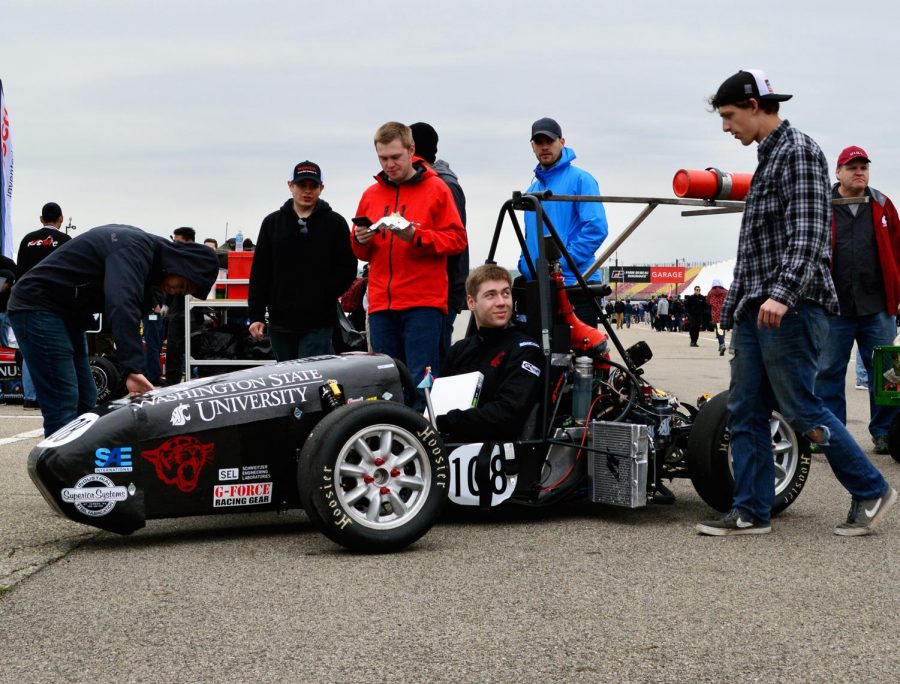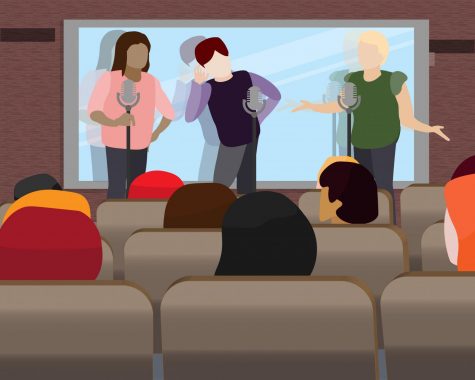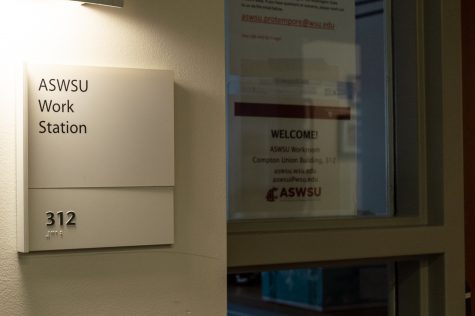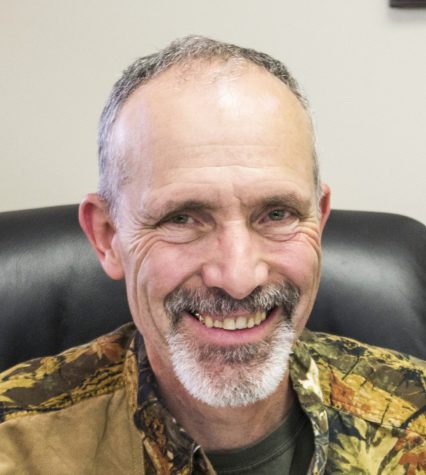Redesigning cars helps members with class
Racing club aims to build lighter, smaller car to compete each year
Formula SAE Racing club President Kevin Basler at a 2016 race in Michigan. When a car is finished, they test run it every weekend until the annual competition.
December 4, 2017
The WSU Formula SAE Racing club competes every summer in Michigan against 120 schools around the world.
SAE International, previously known as Society of Automotive Engineers, developed the first Formula SAE student competition in 1981. It is an engineering design competition where teams create a single passenger race car, according to SAE International’s website.
Powertrain Lead Alex Svensson said friends who heard about the club originally suggested it to him. Now, he is in charge of engine and powertrain design.
“[The car] is approximately half to three-quarters size of a formula one car,” Svensson said. “It’s a scale model of a full-size race car that’s big enough for one person to drive.”
Designing a Formula SAE car applies what students learn in their classes to real-world situations, like building the car, Svensson said.
Vice President James Goding had a friend in the WSU club who encouraged him to come to orientation day last year, he said.
The WSU club tries to redesign a new car from scratch each year, so each competition only requires a new frame, Goding said. Other teams just move all the parts from their last car to the next.
With a new frame, all the designers will try to incorporate new designs, Svensson said. Fitting the engine in such a confined space is one of the main challenges of building the car.
“We get to learn a lot of stuff, especially things we don’t get taught in class,” Goding said. “I’d say I learn just as much from this club as my classes.”
They also try to build as many parts as they can themselves, Goding said. Like on a previous year’s car, the muffler and engine were purchased, but some were 3-D printed.
Before WSU had a Formula SAE club, they competed as a Baja race team in the late 90s, Goding said. In the future, they hope to start an additional team for an electric race car. Right now, the model from 2008 has an electric engine in it.
Most of the team’s sponsors give materials rather than money, Goding said. Most recently, they received a donation of carbon fiber from Boeing.
“Overall, we will have a much smaller, lighter car than last year,” Goding said. “We will do much better this year for that alone.”
The WSU team competes in four different racing competitions, in addition to a business one, Goding said. The car must also be affordable as it stands up to the racing competitions.
As of right now, building their car for the 2018 competition is running smoothly, with no major problems yet, Svensson said. They plan on finishing the car by mid-February.
As soon as the club finishes, they will have test runs every Saturday leading up to competition day, Svensson said. Since the club has a relatively small number of members, anyone who wants to drive can do the practice runs to get a feel for the car.
“It’s generally during those Saturdays when something breaks,” Svensson said. “The more we break now, the more confident we are going into competition.”
While participating in the build has a steep learning curve, anyone with an interest in working on cars can join this club, Svensson said. No experience is required.
The Washington State Formula SAE club has informational meetings at 5 p.m. every Monday in Engineering Lab Building, Room 9. Those interested in joining can find more information on their website and OrgSync page.






















